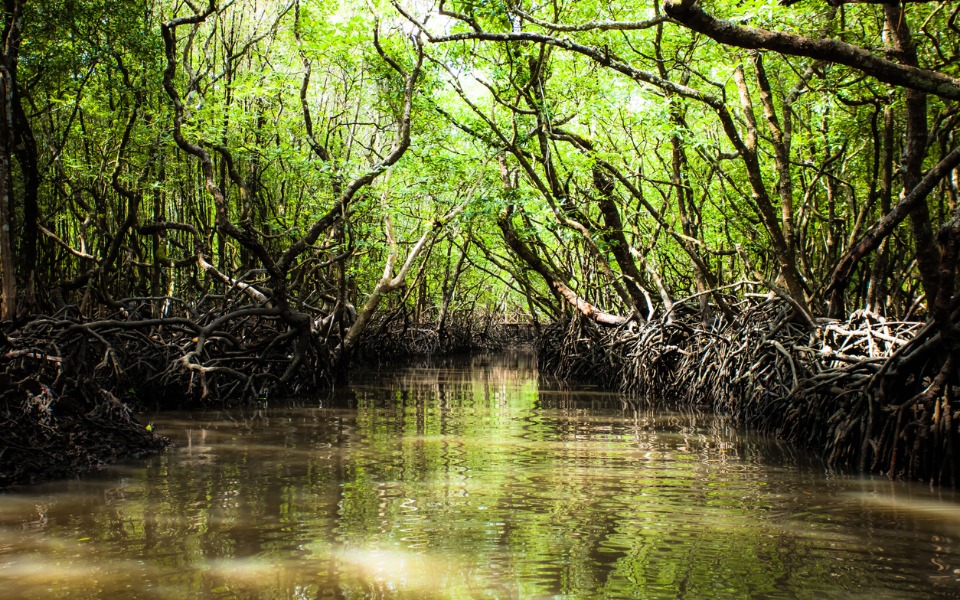
IAEA bets big on ‘Blue Carbon’ to mitigate climate change

The International Atomic Energy Agency (IAEA) has joined hands with leading experts from all over the world to study organically absorbed carbon, known as Blue Carbon.
It is carbon stored in coastal and marine ecosystems such as mangroves, tidal marshland and seagrass meadows that sequester and store more carbon per unit area than terrestrial forests. It’s now being recognized for its role in mitigating climate change. ‘Blue Carbon’ is thus captured and stored to catalyse sustainable solutions to the problem of climate change and corresponding ocean degradation.
Also read: Climate change causing more, intense cyclones in Arabian Sea
In India, mangrove forests are present at Pitchavaram in Cuddalore district of Tamil Nadu, Sunderbans in West Bengal, Chilka Lake, Odisha, Coringa in Andhra Pradesh and in North Andaman Nicobar. These act as a source of minimizing adverse climate change in the Indian Ocean region.
Blue Carbon is found in seagrasses, mangroves, and salt marshes along the coast and they capture and hold carbon, acting as something called carbon sink. These coastal systems sequester (capture Co2) at a much faster rate, and can continue to do so for millions of years.
Most carbon taken up by these ecosystems is stored below ground which can’t be seen, but it is still there. The carbon found in coastal soil is often thousands of years old.
Also read: Carbon footprint calculator tells how lifestyle contributes to climate change
“Mangrove soils have a tremendous capacity to accumulate and retain carbon stocks over millennia. Understanding the sequestration of organic carbon in these ecosystems will help clarify how the ocean is coping with human-made CO2 emissions and what its absorption capacity is,” says Jennet Orayeva of IAEA.
“Coastal Blue Carbon constitutes an important component of nature-based solutions that are essential to offset the negative impacts of climate change,” says Florence Descroix-Comanducci, Director, IAEA Environment Laboratories.
“However, when these ecosystems become damaged or disrupted by human activities, their capacity to sequester carbon can be compromised. As these ecosystems degrade, an enormous amount of carbon that has been accumulated for thousands of years can potentially be released as CO2, further exacerbating climate change,” she said.
Research has proved that the presence of mangrove ecosystems on coastline saves lives and property during natural hazards such as cyclones, storm surges and erosion. These ecosystems are also well known for their economic importance.
They are breeding, feeding, and nursery grounds for many estuarine and marine organisms. Hence, these areas are used for captive and culture fisheries. The ecosystem has a very large unexplored potential for natural products useful for medicinal purposes and also for salt production, apiculture, fuel and fodder.


